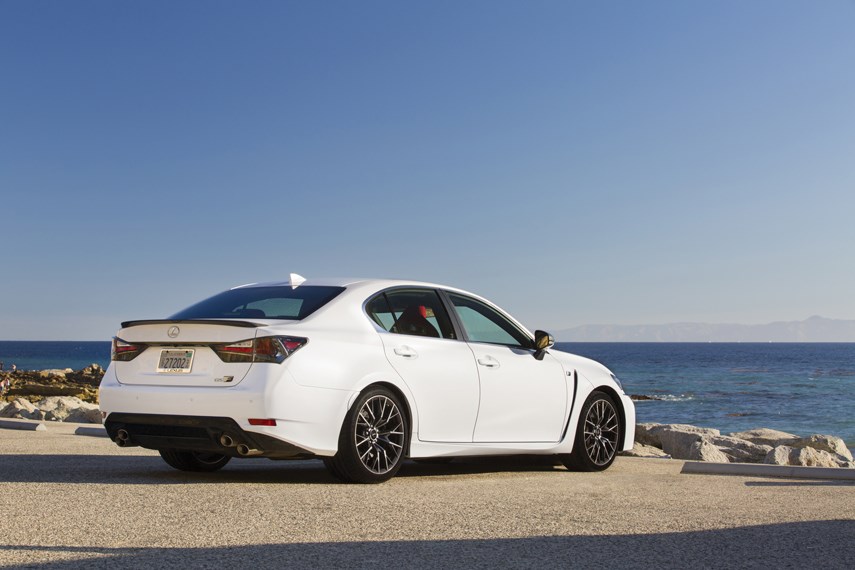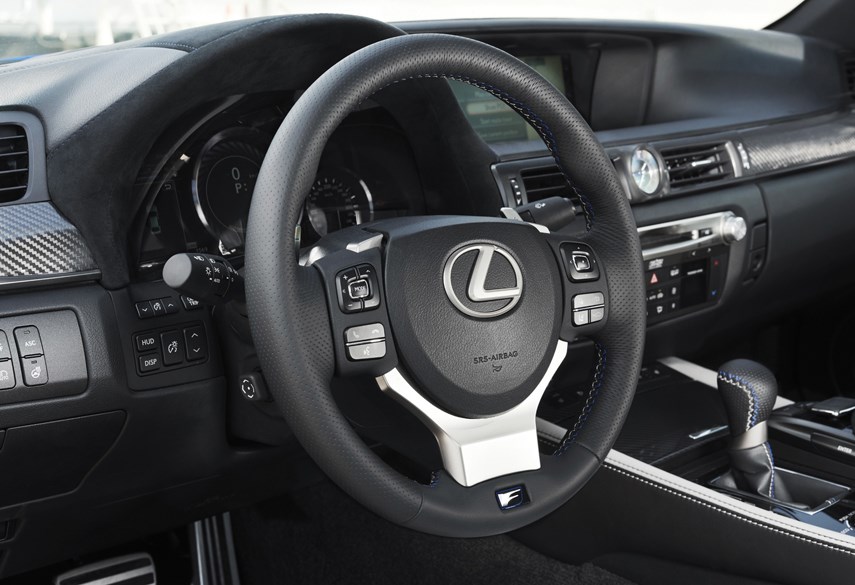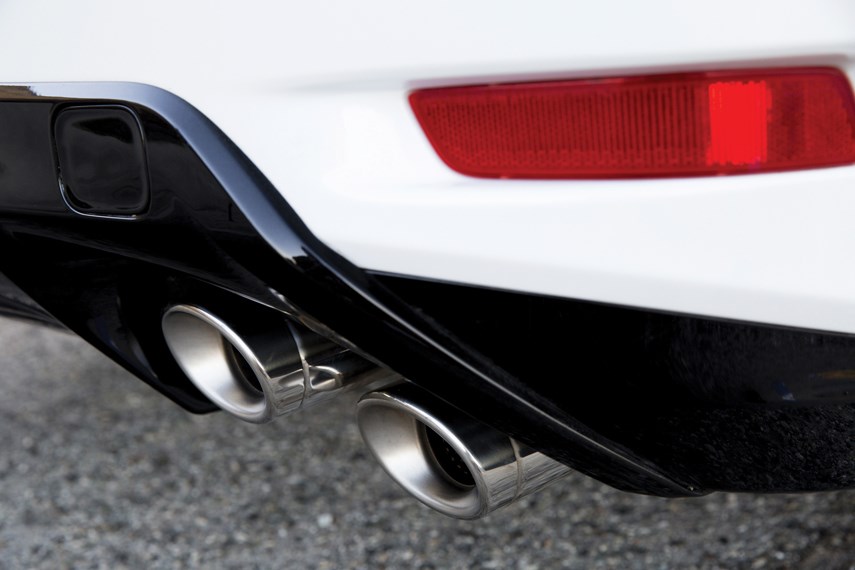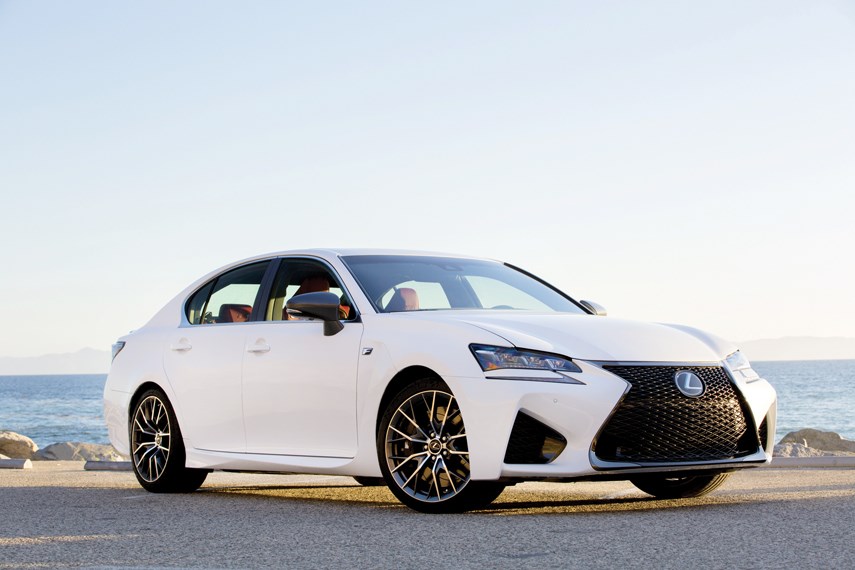This week, we consider a vehicle that you almost certainly are not going to purchase.
Hardly anyone does. So far this year, Lexus has sold just 14 GS sedans, and only a handful of those are the GS-F edition.
Why the lack of popularity? Well, sedans in general have been declining in sales for a while now, and the idea of a full-size, rear-wheel-drive performance machine is of limited appeal to enthusiasts only.
Further, even if you were in the market for a luxury car that can also go like a scalded cat, there are plenty of other options to consider. Both BMW and AMG offer ludicrously powerful sedans, equipped with turbochargers for effortless torque and all-wheel-drive for all-weather capability.

However, the GS-F is certainly worth a closer look, even if it’s not the obvious choice. Yes, it’s not going to win the popularity contest, but that just makes it a more exclusive choice. And, more importantly, it is surprisingly great.
Design
When Lexus first started putting their spindle-shaped grilles on everything, most critics bemoaned the exchange of elegance for aggression. However, the cat’s out of the bag on that one, as now every automaker builds cars that look like they’re partly designed to be waffle makers.
Other than its gaping front end, the GS-F is overall a quite reserved machine. There are F-Series tributes here and there in the details – quad, offset exhausts out back, for instance – and of course the expected large wheels and big brake package.
Overall though, what you’ve got here is the wool-suit equivalent of a wolf in sheep’s clothing. In a neutral colour, the GS-F will be almost totally invisible in a parking lot. I’d spring for the deep blue, as it’s a bit more special.
Environment
Extremely comfortable, but more than a little dated, the GS’s interior is pretty classic Lexus. While most of the German marques are pushing hard into screen-based interiors and plenty of LED screens, Lexus keeps their overall design and control surfaces a little old school.

On the plus side, if you’re less than impressed by digital doo-hickery, you’ll find the GS’s throwback reliance on buttons and recessed screen vaguely comforting. Part of the problem with being cutting edge is that the edge gets blunted by time. The GS is perfectly functional once you figure out the trackpad input system.
It’s also very comfortable. Being the top-of-the-range machine, almost everything is standard, and the heated and cooled seats are very supportive. This is an ideal machine for long-distance touring, and it has a considerable carrying capacity.
Performance
However, the real reason you’re looking at a GS-F is for the performance, and here a little explanation is required. If you opt for this car over a BMW M5 or a Mercedes-AMG E63, you’re making a conscious decision to drive a slower performance vehicle.
If you’re a numbers person, that’s not going to make a lot of sense: why buy the slow fast car? However, the GS-F is one of those vehicles that reinforces that it’s not about the speed, it’s about the experience.
Take the engine, a 5.0-litre naturally-aspirated V-8 that produces 467 horsepower at 7,100 r.p.m. and 389 foot-pounds of torque at 4,800 r.p.m. Solid figures, surely, but in a world where the M5 makes more than 600 h.p., not very brisk.

The thing is, while the German marques dispatch physics with blistering acceleration and technology that covers up any mistakes you might make, they’re also far too fast for the public road. There’s not much joy in driving them, only the quiet satisfaction that you could blitz any corner.
By comparison, the GS-F’s powertrain is silky-smooth and luxurious, but if you want it to get up and gallop, you need to work at it a little. All the fun happens higher up in the rev range, where the V-8 makes lovely snorty noises. It’s very fast, but not in the sort of warp-speed way that the turbocharged competition is.
Further, there’s a bit of trickery out back that really livens things up. The GS-F’s selectable torque-vectoring rear differential adds nimbleness by feeding power to an outside wheel in a corner. With surge-free naturally-aspirated power on tap, you can feed in throttle to tighten up a turn.
The eight-speed automatic gearbox is the one part of this whole experience that’s not particularly sharp in its shifts, but overall the GS-F is a highly polished drive. It’s the sort of car that’ll have you haul out the maps to see where all the squiggly bits are. A pretty good trick for a 1,870-kilogram sedan.
Features
The GS-F comes with all the options ticked, and delves into your wallet for a hefty $99,400. That’s quite a lot, but as it’s such a rare beast with Lexus reliability, retained value should be quite high.
Fuel economy figures aren’t wonderful, as you might expect from an old-fashioned V-8 sedan. Official results are 14.9 litres/100 kilometres in the city and 9.7 l/100 km on the highway. The latter is pretty comparable to V6-powered crossovers, as the V-8 isn’t stressed at highway speeds.
Green light
An exclusive choice; drives far better than expected; great V-8 soundtrack.
Stop sign
Dated interior; big price tag; thirsty for city driving.
The checkered flag
Often overlooked in the market, but a bit of a special find nonetheless.
Competitor
BMW M5 ($113,300): Not just sports car quick in a sedan body, the M5 is now supercar fast. It’ll sprint to 100 km/h in a little over three seconds, and the all-wheel drive lets it claw out of corners early. Or you can put it in rear-drive mode and execute big, effortless slides at the racetrack.
By comparison, the GS-F drives a bit more like the E39 BMW M5 of the early 2000s. If you feel the modern M5 has sacrificed character for speed, then check out the Lexus. If absolute power is the most important thing, then the M5 is still the king.
mcaleeronwheels@gmail.com



